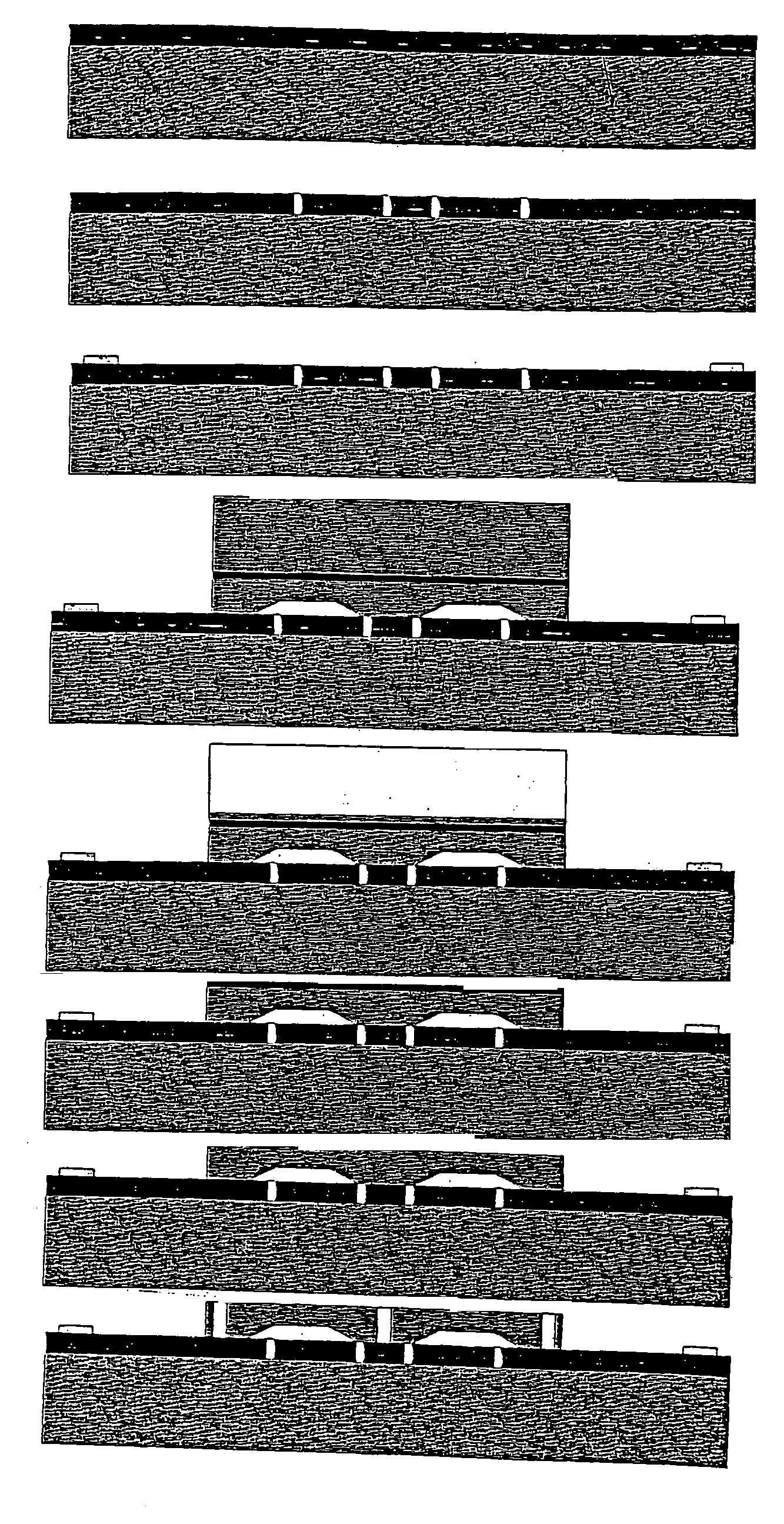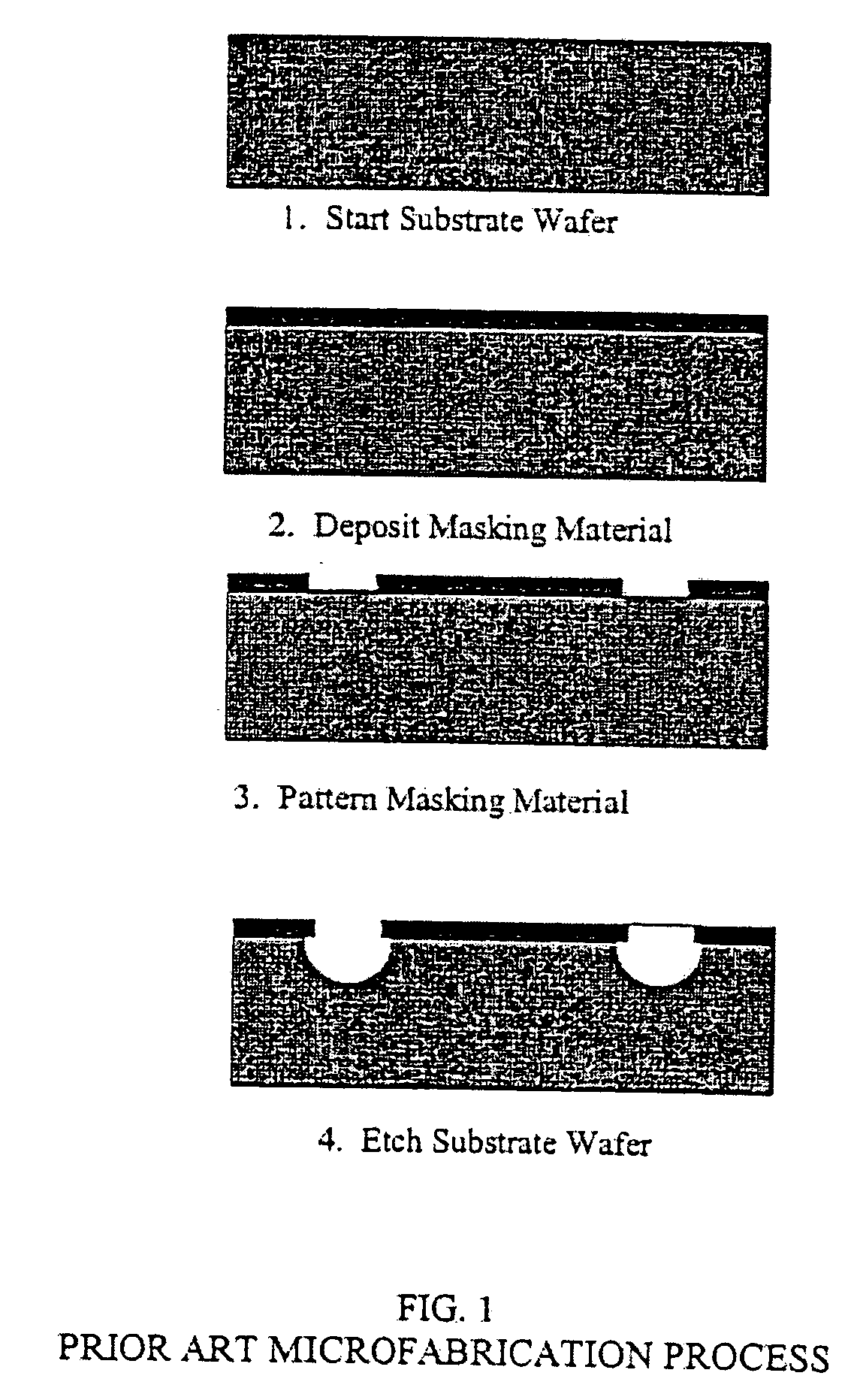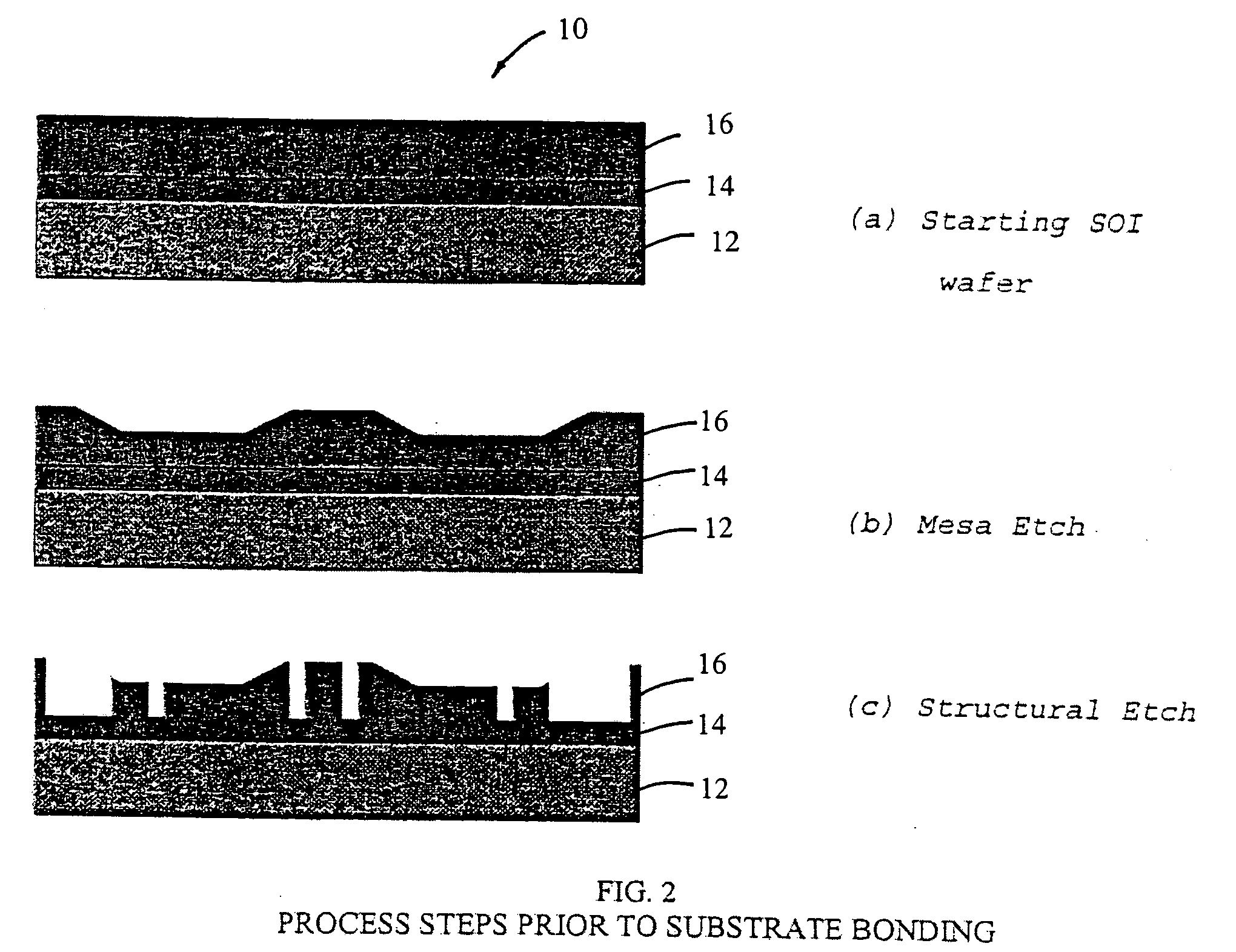Method for microfabricating structures using silicon-on-insulator material
a technology of silicon-on-insulator and microfabrication, which is applied in the direction of manufacturing tools, soldering devices, instruments, etc., can solve the problems of poor process control, the use of soi wafers to build mems devices is not widespread, and the method involves the use of a heavily-boron-doped etch stop
- Summary
- Abstract
- Description
- Claims
- Application Information
AI Technical Summary
Benefits of technology
Problems solved by technology
Method used
Image
Examples
example
Fabrication Method for ALT BESOI Accelerometer
[0060] Summary. Several significant barriers to successful fabrication of the Silicon Oscillator Accelerometer using Silicon-On-Insulator (SOD material have been encountered, necessitating the use of epitaxial material to build acceptable devices. Use of SOI rather than epitaxial material is strongly preferred for numerous reasons, including process flexibility, radiation hardness, performance, and IP issues. Here we show a method for an accelerometer device from SOI material. This process, coined the “ALT BESOI” process, appears to overcome current barriers to SOI processing.
[0061] Principal Advantages of SOI vs. Epitaxial Process. The driving force for using SOI material instead of epitaxial material to build the accelerometer is the greatly enhanced process flexibility afforded by the SOI process. For high performance, the best crystallographic quality is expected to produce the best devices. Device layers on SOI wafers can be of a...
PUM
| Property | Measurement | Unit |
|---|---|---|
| pressure | aaaaa | aaaaa |
| temperature | aaaaa | aaaaa |
| pressure | aaaaa | aaaaa |
Abstract
Description
Claims
Application Information
 Login to View More
Login to View More - R&D
- Intellectual Property
- Life Sciences
- Materials
- Tech Scout
- Unparalleled Data Quality
- Higher Quality Content
- 60% Fewer Hallucinations
Browse by: Latest US Patents, China's latest patents, Technical Efficacy Thesaurus, Application Domain, Technology Topic, Popular Technical Reports.
© 2025 PatSnap. All rights reserved.Legal|Privacy policy|Modern Slavery Act Transparency Statement|Sitemap|About US| Contact US: help@patsnap.com



